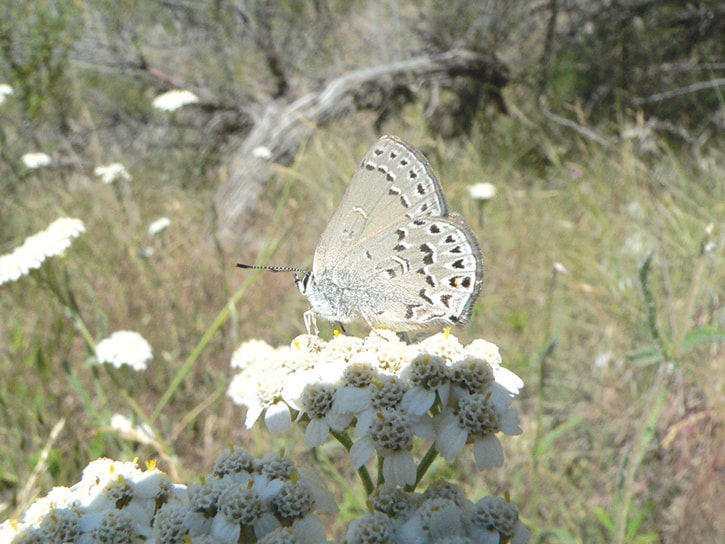The Okanagan Valley is considered by many to be unique in Canada, and in some ways it is.
But many of the things residents and visitors alike find so attractive, such as lakes and mountains, in fact occur elsewhere in Canada.
Sandy beaches are also not exclusive to the Okanagan, likewise for wineries and fruit orchards.
But there are distinctly Okanagan features and one of these is the antelope-brush needle- and-thread grass steppe grasslands.
Wow, that’s a mouthful that doesn’t easily roll off the tongue and won’t be found on many tourist brochures. Nevertheless, it is a critical ecosystem that helps make the Okanagan what it is.
Antelope brush is a shrubby, almost sage-bush like plant, that is part of the rose family. It seldom grows more than three metres tall. In the spring it is covered with small, bright yellow flowers that are quite aromatic. In Canada, it is found in only two places: the South Okanagan Valley and part of the Kootenay Valley.
Antelope brush itself is fairly widespread in the dry western US but the distinct association of Antelope brush and needle and thread bunch grasses is confined to the southernmost Okanagan valley (south of Skaha Lake) and northernmost Washington state.
This antelope brush community requires dry, sandy or gravelly soils derived from glacial material and since the glaciers did not extend very far into Washington this leads to its very restricted occurrence.
The antelope brush community in the Kootenays is also quite different from that in the Okanagan.
Antelope brush habitat was fairly extensive in our valley between Skaha Lake and the U.S. border when Europeans first arrived here but it is estimated that more than 80 per cent of the original amount has been lost and much of the remainder has been severely damaged.
The loss has come mainly from conversion of the grasslands to orchards and vineyards and other urban development.
Damage results from inappropriate cattle grazing, off-road ATVs and invasive plants. Should we care whether this ecosystem survives?
Yes, we should. Humans are already responsible for the extermination of vast numbers of species from the well-known passenger pigeon and dodo bird to lesser known animals such as the Mexican grizzly bear.
Do we want to tell our grandchildren that we were in charge when the last acre of antelope brush habitat was eliminated from Canada and all its attendant species?
The south Okanagan antelope brush ecosystem supports more species than other grassland ecosystems including 88 provincially listed endangered species: 33 invertebrates, 32 vertebrates and 23 plants.
Seventeen of these species are federally listed and three occur nowhere else in Canada. Having a diverse ecosystem is not only good for the planet but it’s good for agriculture, including our fabled wine industry.
Studies have shown that vineyards bordered by natural habitats (such as antelope brush) have significantly less insect problems — the bats and birds associated with natural habitats consume large amounts of insects.
Very little antelope brush habitat has been preserved by the federal or provincial governments — in fact only two small ecological reserves exist that protect token amounts. The largest amount is protected by conservation lands owned by The Nature Trust of BC.
We must take action to preserve what little remains before it is too late.
Bob Handfield is President of the South Okanagan Naturalists’ Club but the views expressed here are his own and not necessarily those of the Club.
